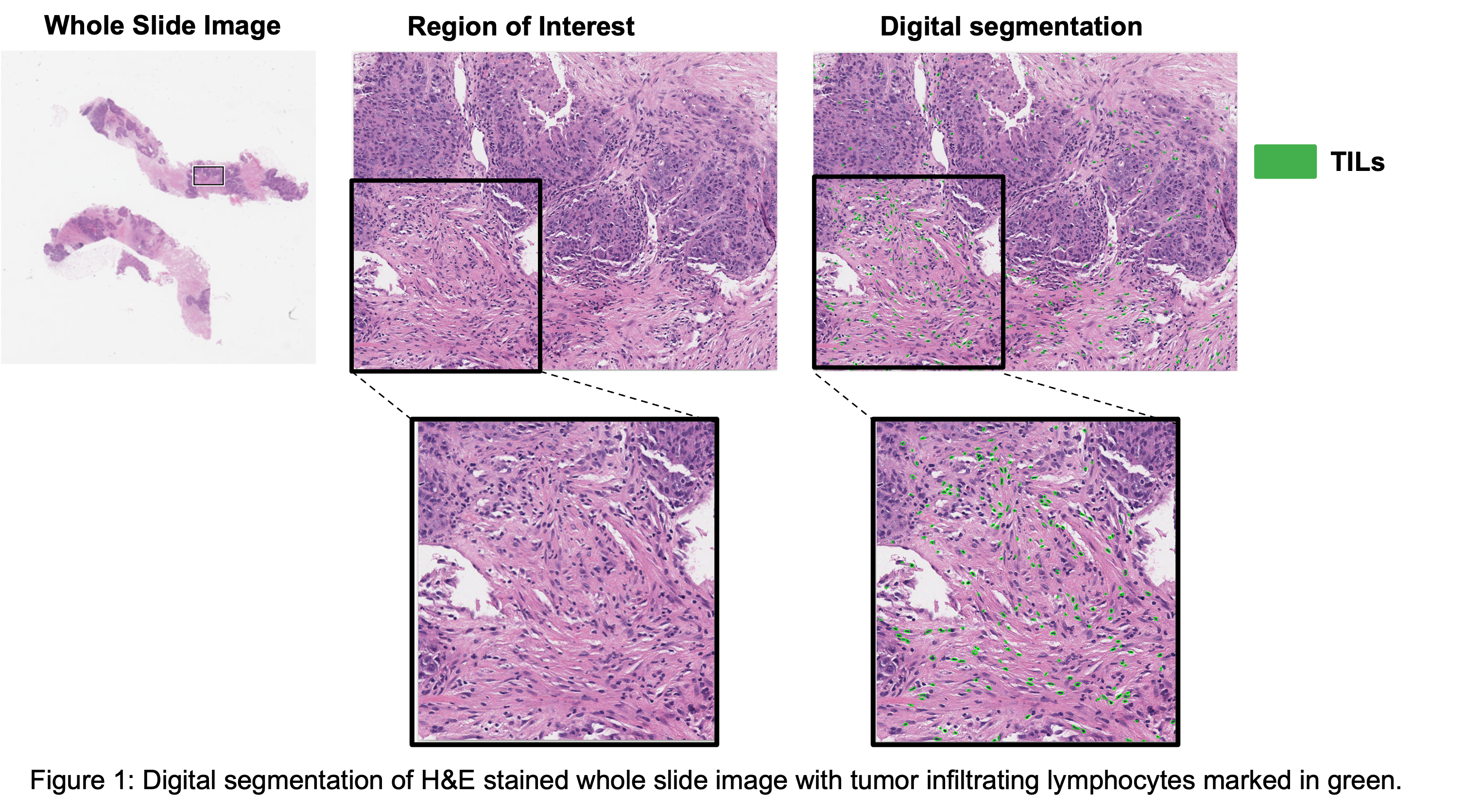Background: Triple negative breast cancer (TNBC) is an aggressive subtype of breast cancer. Additionally, no molecular targets are available for this cancer subtype, restricting the treatment regimen to predominantly standard chemotherapy. Neoadjuvant chemotherapy (NAC) is typically given prior to surgery to reduce tumor burden in patients with locally advanced disease. However, only a small percentage of patients show a pathological complete response after treatment. Prior research has demonstrated that the percentage of stromal (collagen) tumor-infiltrating lymphocytes (TILs), a class of immune cells, correlates to treatment response. The current clinical approaches to measure immune infiltration in tumor and associated collagen are susceptible to inter-observer variability. Additionally, the measurements are often coarse in sampling and challenging to scale up in a high throughput manner. The emergence of digital pathology, employing computational and artificial intelligence (AI) techniques, has resulted in automated and increasingly comprehensive characterization of cell populations from histopathological specimens, including quantitative measurement of stromal TILs. This enables novel analyses into the spatial interplay of immune and cancer cell populations in the tumor microenvironment. In this study, we have developed models for automated segmentation, identification, and quantification of immune, stromal, and tumor components in pre-treatment as well as surgical specimens. We have also correlated the digital immune fingerprint with the NAC response. We are also investigating whether integrating imaging and AI-based immune signatures with functional MRI features will increase the predictive power of response to treatment and recurrence-free survival.
Methods and Results: We first identified a cohort of patients with locally advanced TNBC who underwent diagnostic biopsy and breast MRI prior to NAC. We have acquired both multiplex and pathology imaging data for the immune profiling of patients. We have utilized a combination of supervised and unsupervised machine learning models to digitally segment immune cells and other diagnostic regions of the biopsy. To overcome the limitation of access to labeled data, we have utilized clustering approaches to segment the data and combine it with simpler convolutional neural networks to minimize the user-based subjective interpretation of clustering results. Additionally, we have developed a sampling strategy that minimizes the impact of patient data variability on model generalizability. We have also compared and fine-tuned deep learning-based approaches for high-throughput cell segmentation of multiplexed imaging data. Concordance correlation coefficients were calculated between automated and pathologist measurements in addition to correlating the digital signatures with patient outcome data (response to treatment and recurrence). The resulting pipeline navigates through whole slide images, segments cells, and regions of interest in an automated, high throughput, and accurate manner. Our pipeline also generates a digital stromal TILs score, as shown in the figure below, which is then used as a prognostic marker for patient stratification.
Conclusions: This work is an interdisciplinary effort combining pathology, radiology, data science, and computer vision techniques. We have developed a standardized framework for TILs assessment that can assist pathologists in consistently using this metric for patient prognosis and treatment decision-making. Finally, we have combined the power of multimodal data (three types of imaging data, patient data from medical records) with AI to develop digital indicators of patient prognosis, particularly response to treatment and recurrence free survival.


